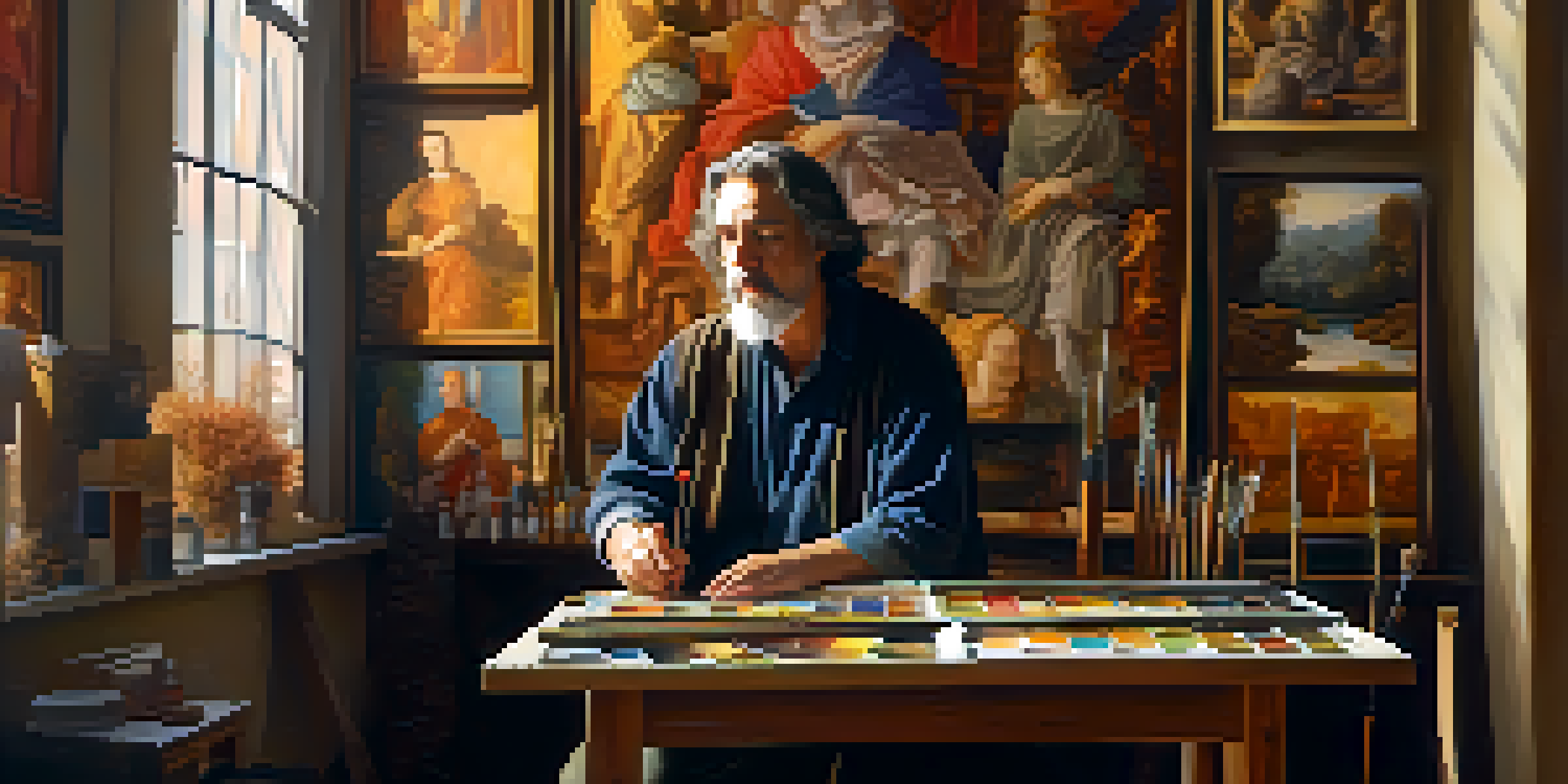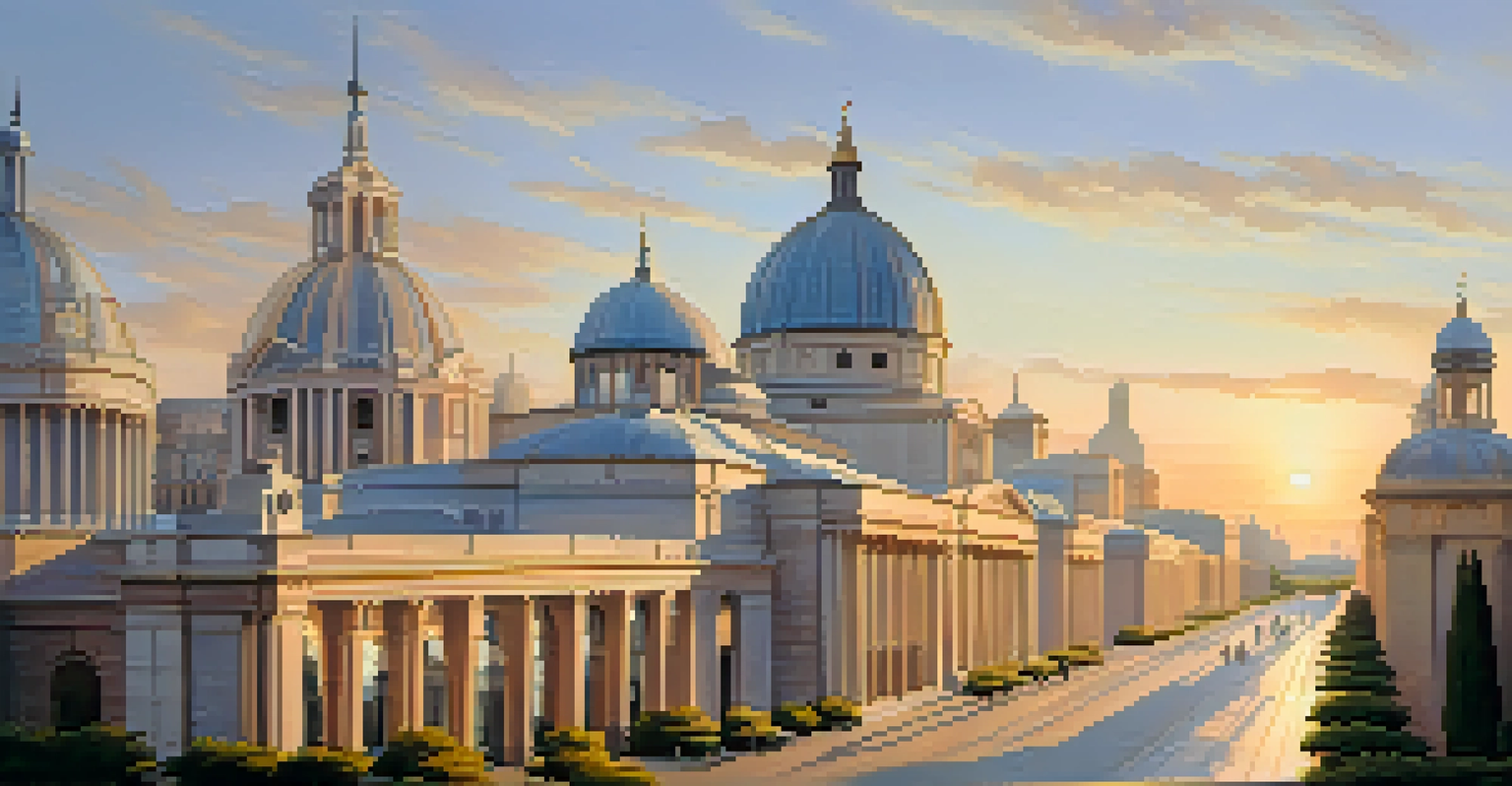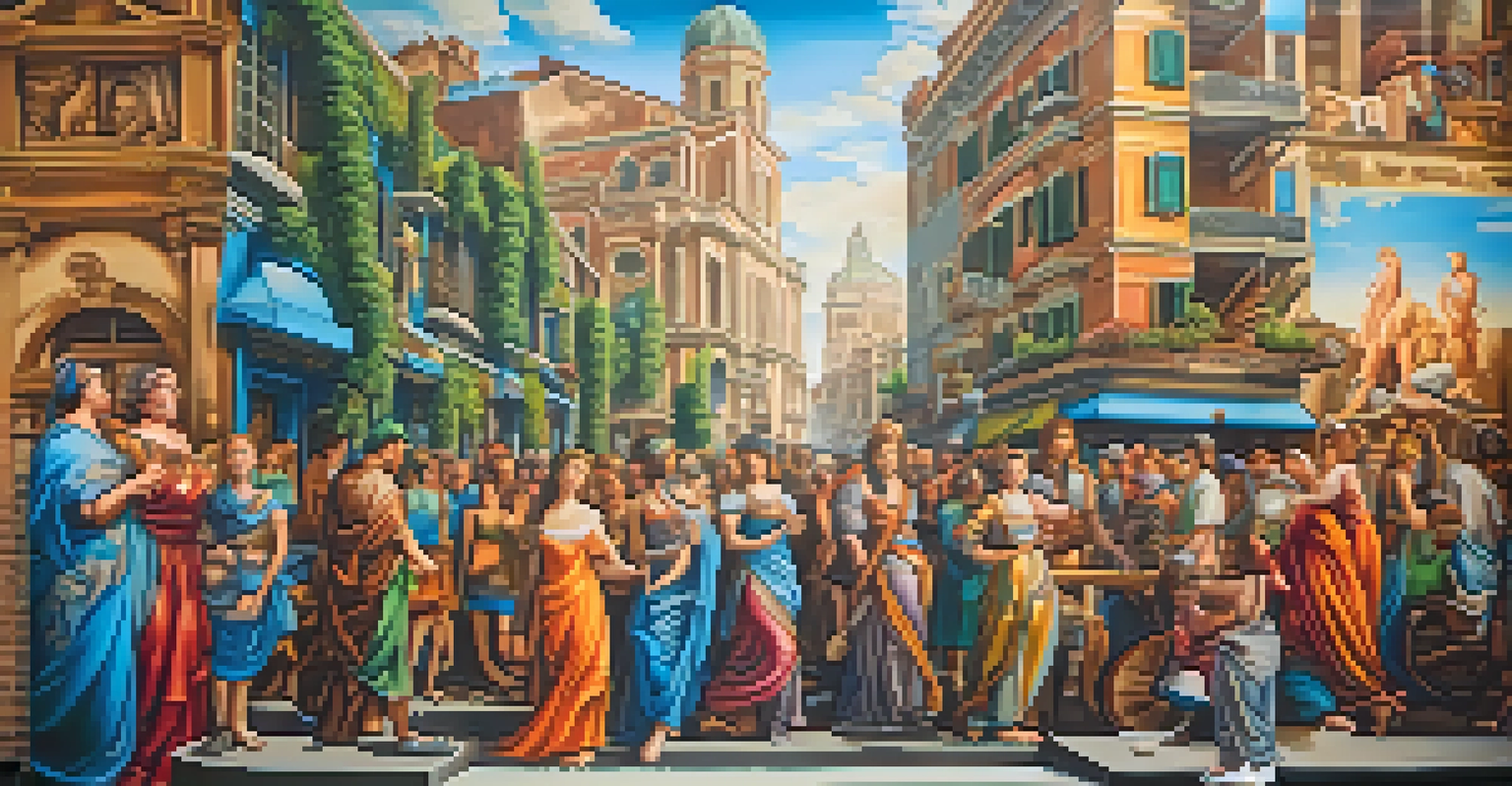Exploring the Impact of Renaissance Art on Modern Culture

The Birth of Individualism in Renaissance Art
During the Renaissance, artists began to emphasize individualism, showcasing the unique traits of their subjects. This shift allowed for a deeper exploration of human emotion and personality, setting the stage for modern portraiture. Think of how today’s selfies and personal branding reflect that same desire for individuality and connection.
Every individual has a story worth telling.
As artists like Leonardo da Vinci and Michelangelo focused on the human form, they elevated the importance of personal identity in art. This emphasis on the self can also be seen in contemporary culture, where personal expression is celebrated through fashion, social media, and various art forms. Just like Renaissance artists, modern creators strive to tell their unique stories.
Related Resource
In essence, the Renaissance taught us that every individual has a story worth telling, a concept that resonates deeply in today’s culture of self-expression and identity exploration. This foundation laid by Renaissance artists continues to inspire people to embrace their individuality, shaping how we view ourselves in society.
Revival of Classical Themes and Motifs
Renaissance art was heavily influenced by the classical themes of ancient Greece and Rome, focusing on beauty, harmony, and proportion. These timeless concepts have found their way into modern design, architecture, and even advertising. For example, think about how many modern buildings incorporate symmetry and classical columns, reminiscent of Renaissance ideals.

This revival of classical elements in art not only showcases beauty but also speaks to the values of balance and order that resonate with us today. Modern films and literature often draw on these classical themes, weaving them into narratives that explore human experience and morality. Just as Renaissance artists looked back to the ancients for inspiration, contemporary creators continue to look for ways to connect with timeless ideas.
Individualism Shaped by Renaissance Art
Renaissance artists emphasized unique traits, paving the way for modern self-expression and identity.
Ultimately, the blend of classical motifs in modern culture serves as a reminder of our shared history and the universal themes that transcend time. This connection helps foster a deeper appreciation for art and encourages us to explore our cultural roots.
Innovation in Techniques and Mediums
The Renaissance was a period of incredible innovation, leading to the development of new techniques like perspective and chiaroscuro. These advancements changed how artists approached their work and opened the door for future experimentation. Today, artists still rely on these techniques, whether they're painting, photographing, or creating digital art.
Art is the most beautiful of all lies.
For instance, the use of perspective in a film can draw viewers into a scene, much like Renaissance painters drew audiences into their compositions. Modern artists continue to push boundaries, using technology to create immersive experiences that echo the innovations of their Renaissance predecessors. This evolution showcases how art adapts while still maintaining core principles established centuries ago.
Related Resource
By understanding the innovative spirit of the Renaissance, we can appreciate how these techniques continue to shape modern artistic endeavors. It’s a testament to human creativity that transcends time and inspires each new generation of artists.
The Role of Art in Social Commentary
Renaissance artists often infused their work with social and political commentary, reflecting the issues of their time. This practice laid the groundwork for art as a medium for social change, a concept that is incredibly relevant today. From street art to contemporary installations, artists continue to use their work to provoke thought and inspire action.
For example, consider how works addressing climate change or social justice resonate with audiences today, echoing the sentiments of Renaissance artists who tackled topics like humanism and morality. Just as they used their medium to comment on society, modern artists are similarly using their voices to advocate for change. This continuity illustrates the power of art in shaping cultural discourse.
Classical Influence on Modern Design
The revival of classical themes in Renaissance art continues to inspire contemporary architecture and design.
In this way, the Renaissance not only influenced artistic techniques but also established art as a crucial tool for societal reflection and progress. As we navigate our own complex world, we see how art remains a vital part of the conversation.
Architecture: Bridging the Past and Present
Renaissance architecture, characterized by symmetry and proportion, still influences contemporary design today. Buildings like the Florence Cathedral and St. Peter's Basilica showcase the grandeur and elegance that modern architects often strive to replicate. When we walk through our cities, we can see how these classical principles continue to shape the skyline.
Modern structures often incorporate elements reminiscent of Renaissance architecture, such as arches and domes, creating a dialogue between the past and present. This blending of styles not only honors historical significance but also enriches our urban environments. It's fascinating to think about how these architectural choices create spaces that foster community and connection.
Related Resource
Thus, Renaissance architecture serves as a bridge linking us to our cultural heritage while inspiring modern designs. By appreciating these influences, we can better understand how our physical spaces reflect a continuum of artistic expression.
Influence on Modern Education and Art Training
The Renaissance was pivotal in shaping art education, emphasizing observation and practice. This approach to learning remains foundational in art schools today, where students are encouraged to study the masters and hone their skills through practice. The value placed on mentorship during the Renaissance is mirrored in modern educational structures, fostering creativity and technical proficiency.
Just like apprentices of the past learned from experienced artists, today’s students benefit from hands-on experiences and critiques that help them grow. This legacy of learning emphasizes the importance of community and collaboration in the artistic process. It’s a reminder that art is not just an individual pursuit but also a collective journey.
Art as a Medium for Social Change
Renaissance artists used their work for social commentary, a practice that remains relevant in today's artistic expressions.
By examining how Renaissance principles inform modern education, we can appreciate the ongoing evolution of artistic training. This connection helps us understand the importance of cultivating talent and preserving the legacy of great artists.
Renaissance Art: A Source of Inspiration for Pop Culture
Renaissance art has left an indelible mark on pop culture, influencing everything from fashion to film. Iconic works have been referenced and reinterpreted in modern media, demonstrating the enduring appeal of these masterpieces. For instance, films often pay homage to Renaissance imagery, using its symbolism to add depth to storytelling.
In fashion, designers frequently draw inspiration from the grandeur of Renaissance aesthetics, incorporating rich colors and intricate patterns. This blending of historical art with contemporary style creates a dialogue between eras, allowing us to appreciate the timelessness of these artistic elements. Just like Renaissance artists found inspiration in nature and mythology, modern creators continue that tradition.

Ultimately, the influence of Renaissance art on pop culture underscores its relevance in our daily lives. By recognizing these connections, we can celebrate the ways art continues to inspire and shape our cultural landscape.